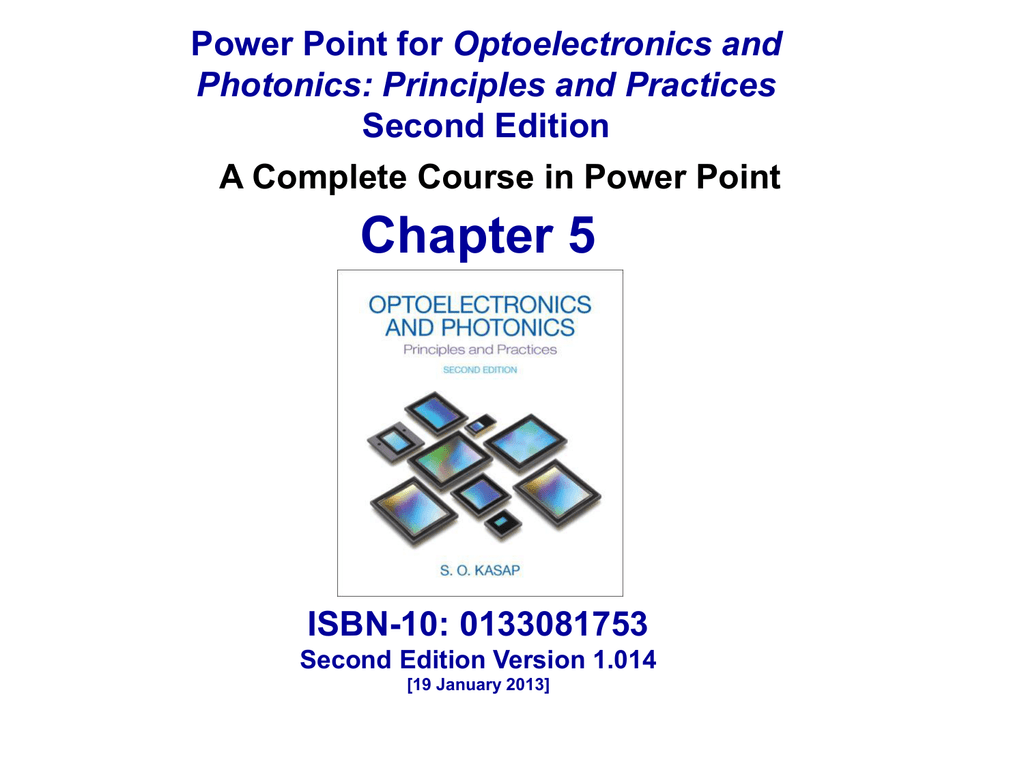Kasap Optoelectronics And Photonics Solution Manual
. Numerous modern topics in photonics are included in all the chapters. There are Additional Topics that can be covered in more advanced courses, or in courses that run over two semesters. There are many new and solved problems within chapters, and many practical end-of-chapter problems that start from basic concepts and build-up onto advanced applications. Photographs, illustrations, and artwork are used, where appropriate, to convey the concepts as clearly as possible. Advanced or complicated mathematical derivations are avoided and, instead, the emphasis is placed on concepts and engineering applications. Useful and essential equations in photonics are given with explanations; and are used in examples and problems to give the student a sense of what are typical values.
Emphasis is placed on practical or engineering examples; care has been taken to consider various photonics/optoelectronics courses at the undergraduate level across major universities. The Second Edition is supported by an extensive Power Point presentation for instructors. The Power Point has all the illustrations in color, and includes additional color photos. The basic concepts and equations are also highlighted in additional slides.
There are also numerous slides with examples and solved problems. The readers who have purchased a copy of the book are allowed to use the Power Point slides in their research seminars, workshops, symposia and conferences. The Second Edition is supported by an extensive Solutions Manual for instructors. (Instructors need to contact the publisher with their course details.). Gaf projector manuals. For updated Errata, Resources for Instructors and Students, and information regarding the Second Edition please visit.
The second edition represents a total revision of the first edition, with numerous additional features and enhancements. All chapters have been totally revised and extended. Numerous modern topics in photonics have been added to all the chapters. There are Additional Topics that can be covered in more advanced courses, or in courses that run over two semesters. There are many more new examples and solved problems within chapters, and many more practical end-of-chapter problems that start from basic concepts and build-up onto advanced applications. Nearly all the illustrations and artwork in the first edition have been revised and redrawn to better reflect the concepts. Numerous new illustrations have been added to convey the concepts as clearly as possible.
Photographs have been added, where appropriate, to enhance the readability of the book; and to illustrate typical modern photonic/optoelectronic devices. Chapter 7 on photovoltaics has been incorporated into Ch. 6 as an Additional Topic, which has allowed more photonics-related topics to be covered in Chapters 1-5.
Advanced or complicated mathematical derivations are avoided and, instead, the emphasis is placed on concepts and engineering applications. Useful and essential equations in photonics are given with explanations; and are used in examples and problems to give the student a sense of what are typical values. Cross referencing in the Second Edition has been avoided as much as possible without too much repetition, and to allow various sections and chapters to be skipped as desired by the reader. There is greater emphasis on practical or engineering examples; care has been taken to consider various photonics/optoelectronics courses at the undergraduate level across major universities.

Optoelectronics And Photonics Ppt

The Second Edition is supported by an extensive Power Point presentation for instructors. The Power Point has all the illustrations in color, and includes additional color photos. The basic concepts and equations are also highlighted in additional slides. There are also numerous slides with examples and solved problems. The readers who have purchased a copy of the book are allowed to use the Power Point slides in their research seminars, workshops, symposia and conferences (go to ).
The Second Edition is supported by an extensive Solutions Manual for instructors. (Instructors need to contact the publisher with their course details.).